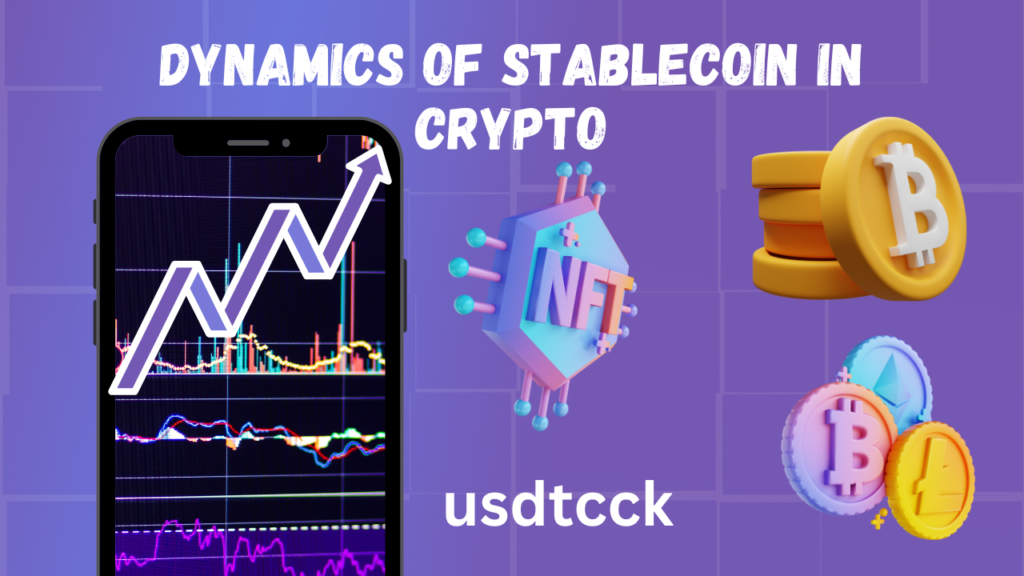Introduction
In the fast-evolving realm of cryptocurrencies, stablecoins have emerged as a cornerstone, offering stability amidst the volatility that characterizes the market. Among these stablecoins, USDTCCK stands out, presenting a unique blend of features that have garnered attention within the crypto community. This guide delves into the intricacies of USDTCCK, exploring its fundamentals, adoption, implications, and future prospects.
Understanding USDTCCK
- An Overview of Stablecoins
Before diving into USDTCCK specifically, it’s essential to grasp the concept of stablecoins. Unlike traditional cryptocurrencies like Bitcoin or Ethereum, whose values fluctuate wildly, stablecoins are designed to maintain a stable value. They achieve this by pegging their value to assets like fiat currencies, commodities, or even other cryptocurrencies.
- USDTCCK: Decoding the Name
USDTCCK, short for USDT on CK Networks, is a stablecoin built on the CK Networks blockchain. It’s essentially a tokenized version of the US dollar, offering users the stability of fiat currency combined with the efficiency and security of blockchain technology.
The Mechanics of USDTCCK
- Pegging Mechanism
Like most stablecoins, USDTCCK maintains its stability through a pegging mechanism. Each USDT CCK token is backed by an equivalent amount of US dollars held in reserve. This ensures that the value of USDT CCK remains relatively constant, mirroring the value of the US dollar.
- Blockchain Integration
Being built on the CK Networks blockchain, USDT CCK inherits the benefits of blockchain technology, including decentralization, transparency, and immutability. Transactions involving USDT CCK are recorded on the CK Networks blockchain, enabling fast and secure transfers across the network.
Adoption and Use Cases
- Cryptocurrency Trading
One of the primary use cases of USDTCCK is within the realm of cryptocurrency trading. Traders often use stablecoins like USDTCCK as a safe haven during times of high volatility. By converting their volatile cryptocurrencies into USDT CCK, traders can effectively “park” their funds in a stable asset, shielding them from market fluctuations.
- Remittances and Cross-Border Payments
The stability and efficiency of USDTCCK also make it an attractive option for remittances and cross-border payments. Individuals and businesses can leverage USDT CCK to facilitate international money transfers quickly and cost-effectively, bypassing the lengthy processing times and hefty fees associated with traditional banking systems.
- Hedging Against Inflation
In regions plagued by hyperinflation or economic instability, USDTCCK can serve as a hedge against currency devaluation. By holding USDT CCK, individuals can preserve the value of their wealth in a stable asset, mitigating the adverse effects of inflation on their purchasing power.
Regulatory Considerations
- Compliance and Regulation
As with any cryptocurrency, regulatory compliance is a crucial aspect of USDTCCK’s adoption and mainstream acceptance. Given its peg to fiat currency, USDT CCK may fall under the purview of financial regulations governing stablecoins and digital assets. Compliance with these regulations is essential to ensure the legitimacy and legality of USDT CCK transactions.
- Stablecoin Regulation
Stablecoins have attracted increased scrutiny from regulators worldwide due to their potential implications for monetary stability and financial integrity. Regulators may impose restrictions or guidelines on the issuance, redemption, and circulation of stablecoins like USDTCCK to mitigate risks such as money laundering, terrorist financing, and consumer protection.
Challenges and Risks
- Centralization Concerns
One of the criticisms leveled against USDTCCK and other stablecoins is the centralization of reserves. Unlike decentralized cryptocurrencies like Bitcoin, where the supply is governed by mathematical algorithms, stablecoins often rely on centralized entities to manage reserves and maintain stability. This centralization introduces counterparty risk and undermines the trustless nature of blockchain technology.
- Regulatory Uncertainty
The regulatory landscape surrounding stablecoins is still evolving, creating uncertainty for users and issuers alike. Changes in regulations or enforcement actions by regulatory authorities could impact the viability and legality of USDTCCK, potentially disrupting its operation and adoption.
Future Outlook
- Integration with DeFi Ecosystem
As decentralized finance (DeFi) continues to gain traction, stablecoins like USDT CCK are poised to play a pivotal role in the DeFi ecosystem. USDT CCK can serve as a stable medium of exchange and store of value within various DeFi applications, including lending, borrowing, and decentralized exchanges.
- Cross-Chain Compatibility
Interoperability between different blockchain networks is a significant area of development in the cryptocurrency space. In the future, we may see USDT CCK expanding its presence beyond the CK Networks blockchain and integrating with other blockchain platforms, enhancing its accessibility and utility.
- Mainstream Adoption
With growing awareness and acceptance of cryptocurrencies, stablecoins like USDT CCK could see broader adoption in mainstream finance. As individuals and institutions seek alternatives to traditional banking systems, the stability, security, and efficiency offered by USDT CCK may make it an attractive option for everyday transactions and financial services.
Conclusion
USDTCCK represents a significant innovation in the realm of stablecoins, offering stability, security, and efficiency in an increasingly volatile cryptocurrency market. While challenges and regulatory uncertainties persist, the adoption and evolution of USDTCCK herald a promising future for stablecoins and their role in reshaping the global financial landscape. As the crypto industry continues to mature, USDTCCK stands poised to carve out its niche as a trusted and indispensable asset in the digital economy.

